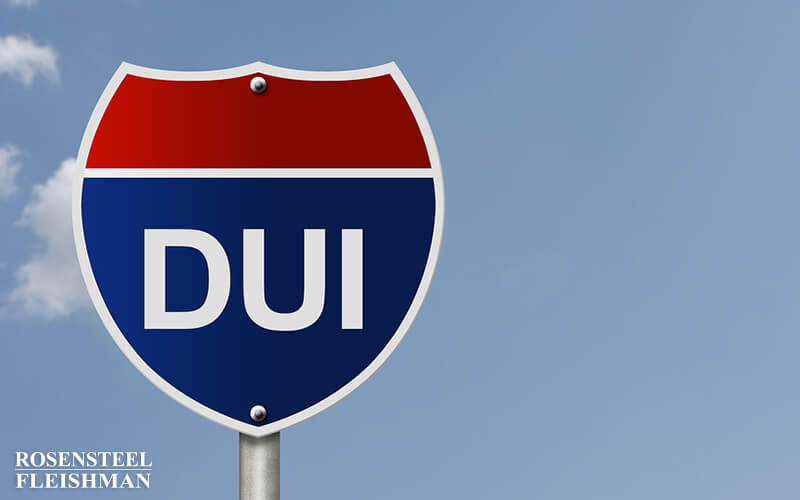While drunk driving accidents have been on the decline in the past few years, drunk driving is still a major problem in the United States and a leading cause of car accidents. The most recent statistics released by the National Highway Traffic Safety Administration show that approximately 28 people die in car accidents every day […]

Court of Appeals Discusses Public Vehicular Area
The North Carolina Court of Appeals issued an opinion in State v. Ricks today which discussed the issue of whether a cut through across a vacant lot was a “public vehicular area” under the DWI statute. The court held that the area did not meet the definition and reversed the defendant’s conviction.
In Ricks, an officer responded to a dispatch call reporting a motorcycle accident. The officer described the area in which the accident occurred as a vacant lot at the intersection of two streets, with businesses on both sides. The officer thought there had been a building on the lot in the past but the only thing on the lot at the time of the accident was a driveway which connected the two intersecting streets. In his testimony, the officer called this driveway a “cut through” and stated that he had seen people walking and bicycling on it. The officer believed that the cut through had previously been paved, but at the time of the accident, it was a dirt path that was “mowed down” by the foot and bicycle traffic. Although the cut through was primarily used by pedestrians and bicyclists, the officer testified that he had seen cars use it to turn around. The officer never determined who the owner of the lot was.
When the officer arrived, the defendant had already gotten back on his moped and started the engine. The officer asked the defendant to turn off the engine and dismount the moped. The defendant had difficulty dismounting, and when the defendant took off his helmet, the officer immediately detected a strong odor of alcohol on the defendant’s breath. The defendant also had difficulty retrieving his I.D. from his wallet. The defendant admitted that he had consumed alcohol earlier in the day, but claimed to have had only one drink several hours before. During the conversation, the officer noticed that the defendant’s speech was slurred.
The officer told the defendant that he suspected that the defendant was impaired and asked him to submit to field sobriety tests. The defendant performed poorly on the field sobriety tests. As a result of this performance and the officer’s other observations, the officer arrested the defendant for dwi. At the police department, the defendant submitted to a breath test, which revealed that the defendant’s BAC was 0.17.
At trial, the defendant argued that the vacant lot was not a “public vehicular area.” The State argued that the vacant lot met the definition of a “public vehicular area” as “an area used by the public at any time for vehicular traffic.” The State supported its argument with evidence showing that the vacant lot was used by pedestrians and bicyclists, the cut through was wide enough for a police cruiser, and there were no signs or barriers to keep the public out.
The trial court agreed with the State, and instructed the jury that a public vehicular area was
any area within the State of North Carolina used by the public for vehicular traffic at any time including by way of illustration and not limitation any drive, driveway, road, roadway, street, alley or parking lot.
The defendant was subsequently found guilty of both DWI and habitual impaired driving.
The court of appeals began its analysis by looking at the DWI statute. G.S. 20-138.1(a) states that
A person commits the offense of impaired driving if he drives any vehicle upon any highway, any street, or any public vehicular area . . . [a]fter having consumed sufficient alcohol that he has, at any relevant time after the driving, an alcohol concentration of 0.08 or more.
The defendant was clearly driving a vehicle and had a BAC of 0.08 or more. However, the defendant was not driving his vehicle on a highway or street, so the question is whether he was driving on a “public vehicular area.”
The court of appeals turned to the statutory definition of “public vehicular area” found in G.S. 20-4.01(32) which is
Any area within the State of North Carolina that meets one or more of the following requirements:
a. The area is used by the public for vehicular traffic at any time, including by way of illustration and not limitation any drive, driveway, road, roadway, street, alley, or parking lot upon the grounds and premises of any of the following:
1. Any public or private hospital, college, university, school, orphanage, church, or any of the institutions, parks or other facilities maintained and supported by the State of North Carolina or any of its subdivisions.
2. Any service station, drive-in theater, supermarket, store, restaurant, or office building, or any other business, residential, or municipal establishment providing parking space whether the business or establishment is open or closed.
3. Any property owned by the United States and subject to the jurisdiction of the State of North Carolina. (The inclusion of property owned by the United States in this definition shall not limit assimilation of North Carolina law when applicable under the provisions of Title 18, United States Code, section 13).
b. The area is a beach area used by the public for vehicular traffic.
c. The area is a road used by vehicular traffic within or leading to a gated or non-gated subdivision or community, whether or not the subdivision or community roads have been offered for dedication to the public.
d. The area is a portion of private property used by vehicular traffic and designated by the private property owner as a public vehicular area in accordance with G.S. 20-219.4.
The court contrasted this definition with the definition of a “private road or driveway” found in G.S. 20-4.01(30) which is “[e]very road or driveway not open to the use of the public as a matter of right for the purpose of vehicular traffic.”
The court stated that
It is evident from the examples listed that the definition a of public vehicular area set out in N.C. Gen. Stat. § 20-4.01(32)(a) contemplates areas generally open to and used by the public for vehicular traffic as a matter of right or areas used for vehicular traffic that are associated with places generally open to and used by the public, such as driveways and parking lots to institutions and businesses open to the public.
The court found the vacant lot to be “dissimilar” to the examples in subsection (a) which are generally open to the public. The court held that for an area to be deemed a public vehicular area under subsection (a) of the definition, “there must be some evidence demonstrating the property is similar in nature to those examples provided by the General Assembly in the statute.”
The court also noted that subsection (d) provides that a public vehicular area can be on “private property used by vehicular traffic” if the private property owner designates the property as a public vehicular area. In this case, however, there was no evidence showing who the owner of the vacant lot was or whether the lot had been designated as a public vehicular area.
The court concluded by emphasizing that
the entire definition of public vehicular area in N.C. Gen. Stat. § 20-4.01(32)(a) is significant to a determination of whether an area meets the definition of a public vehicular area; the examples are not separable from the statute. Consequently, even assuming there was sufficient evidence to allow the jury to decide whether the vacant lot was a public vehicular area, the trial court erred in abbreviating the definition of public vehicular area in the instructions to the jury and by preventing defendant from arguing his position in accordance with N.C. Gen. Stat. § 20-4.01(32)(a).
If you have been charged with impaired driving, visit www.rflaw.net for legal help.
Additional DWI Articles
I. You Will Need a Lawyer Just because someone has had drinks, does notautomatically mean that the law should rest on their shoulders and result in an automatic conviction. That is partly why, under North Carolina law, a series of safeguards have been adopted. These safeguards often rely on, and are helpfully followed, by experienced […]
I. Working While Impaired It is a sobering crisis. We cannot say for sure just exactly how many people drink during work hours, and then drive a vehicle within a short period of time after leaving the restaurant or bar. Often, it requires help from a car accident attorney to see if this drinking is […]
I. PC for DWI An experienced Charlotte criminal trial attorney is aware of the unique place that DWI charges can play in North Carolina courts. There’s no doubt that the public generally supports crackdowns on DWI offenses in North Carolina. But here’s the news flash: as important as DWI is, to maintaining public safety, it’s […]
